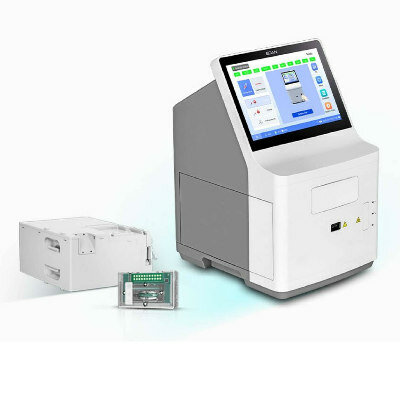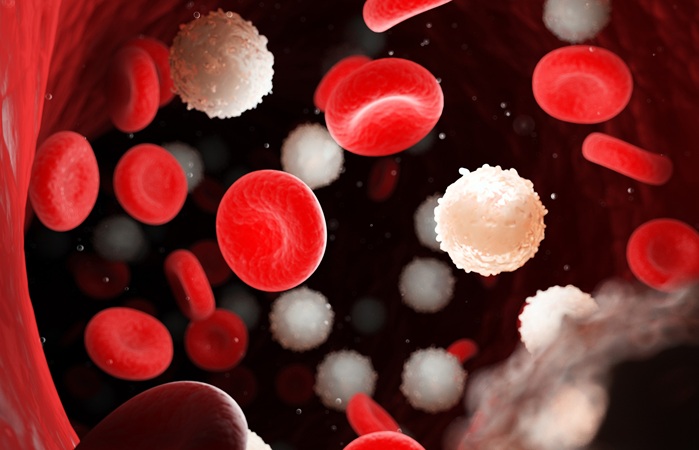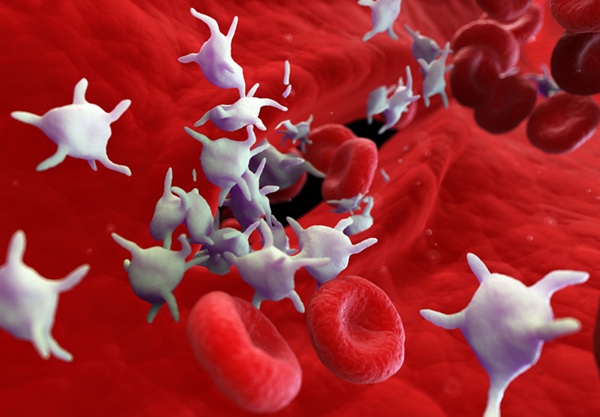New Gene Mutations Found for Wilms Tumor
|
By LabMedica International staff writers Posted on 18 Sep 2014 |
The genetic causes of Wilms tumor, a type of kidney cancer found only in children, has been revealed by whole-exome sequencing identifying missense mutations in the microRNA (miRNA)-processing enzymes.
Wilms tumor or nephroblastoma is the most common childhood genitourinary tract cancer and the third most common pediatric solid tumor and it comprises 95% of all renal cancers and 6% of all cancers diagnosed among children less than 15 years of age.
Scientists the University of Texas Southwestern Medical Center (Dallas, TX, USA) performed exome capture and massively parallel sequencing on a discovery set of 15 pairs of Wilms tumors and matched adjacent normal kidney cortices, and subsequently performed whole-exome sequencing on a validation set of 29 additional Wilms tumors. The team of scientists also performed cell culture and immunoprecipitation, small ribonucleic acid (RNA) sequencing.
.
Small RNAs were isolated from each tumor sample and all samples were analyzed using the RNA 6000 Nano LabChip (Agilent Technologies; Santa Clara, CA, USA) on an Agilent Technologies 2100 Bioanalyzer. Western blotting was performed using monoclonal antibodies and miRNA expression was analyzed in engineered cell lines. Libraries produced were sequenced using the HiSeq 2000 (Illumina; San Diego, CA, USA), producing 100 bp paired-end reads.
Examination of tumor miRNA expression, in vitro processing assays and genomic editing in human cells demonstrated that the gene mutations in endoribonuclease Dicer (DICER1) and ribonuclease 3 (DROSHA) influence miRNA processing through distinct mechanisms.
James F. Amatruda, MD, PhD, a Professor of Pediatrics, Molecular Biology, and Internal Medicine, and senior author of the study said, “The most common, and in some ways the most biologically interesting, mutations were found in genes called DROSHA and DICER1. We found that these mutations affected the cell's production of microRNAs, which are tiny RNA molecules that play big roles in controlling the growth of cells, and the primary effect was on a family of microRNAs called let-7. Let-7 is an important microRNA that slows cell growth and in Wilms tumors in which DROSHA or DICER1 were mutated, let-7 RNA is missing, which causes the cells to grow abnormally fast.” The study was published on September 5, 2014, in the journal Nature Communications.
Related Links:
University of Texas Southwestern Medical Center
Agilent Technologies
Illumina
Wilms tumor or nephroblastoma is the most common childhood genitourinary tract cancer and the third most common pediatric solid tumor and it comprises 95% of all renal cancers and 6% of all cancers diagnosed among children less than 15 years of age.
Scientists the University of Texas Southwestern Medical Center (Dallas, TX, USA) performed exome capture and massively parallel sequencing on a discovery set of 15 pairs of Wilms tumors and matched adjacent normal kidney cortices, and subsequently performed whole-exome sequencing on a validation set of 29 additional Wilms tumors. The team of scientists also performed cell culture and immunoprecipitation, small ribonucleic acid (RNA) sequencing.
.
Small RNAs were isolated from each tumor sample and all samples were analyzed using the RNA 6000 Nano LabChip (Agilent Technologies; Santa Clara, CA, USA) on an Agilent Technologies 2100 Bioanalyzer. Western blotting was performed using monoclonal antibodies and miRNA expression was analyzed in engineered cell lines. Libraries produced were sequenced using the HiSeq 2000 (Illumina; San Diego, CA, USA), producing 100 bp paired-end reads.
Examination of tumor miRNA expression, in vitro processing assays and genomic editing in human cells demonstrated that the gene mutations in endoribonuclease Dicer (DICER1) and ribonuclease 3 (DROSHA) influence miRNA processing through distinct mechanisms.
James F. Amatruda, MD, PhD, a Professor of Pediatrics, Molecular Biology, and Internal Medicine, and senior author of the study said, “The most common, and in some ways the most biologically interesting, mutations were found in genes called DROSHA and DICER1. We found that these mutations affected the cell's production of microRNAs, which are tiny RNA molecules that play big roles in controlling the growth of cells, and the primary effect was on a family of microRNAs called let-7. Let-7 is an important microRNA that slows cell growth and in Wilms tumors in which DROSHA or DICER1 were mutated, let-7 RNA is missing, which causes the cells to grow abnormally fast.” The study was published on September 5, 2014, in the journal Nature Communications.
Related Links:
University of Texas Southwestern Medical Center
Agilent Technologies
Illumina
Read the full article by registering today, it's FREE! 

Register now for FREE to LabMedica.com and get access to news and events that shape the world of Clinical Laboratory Medicine. 
- Free digital version edition of LabMedica International sent by email on regular basis
- Free print version of LabMedica International magazine (available only outside USA and Canada).
- Free and unlimited access to back issues of LabMedica International in digital format
- Free LabMedica International Newsletter sent every week containing the latest news
- Free breaking news sent via email
- Free access to Events Calendar
- Free access to LinkXpress new product services
- REGISTRATION IS FREE AND EASY!
Sign in: Registered website members
Sign in: Registered magazine subscribers
Latest Molecular Diagnostics News
- New Genetic Tool Analyzes Umbilical Cord Blood to Predict Future Disease
- Spinal Fluid Biomarker for Parkinson’s Disease Offers Early and Accurate Diagnosis
- Revolutionary Blood Test Detects 30 Different Types of Cancers with 98% Accuracy
- Simple Blood Test Better Predicts Heart Disease Risk
- New Blood Test Detects 12 Common Cancers Before Symptoms Appear
- Blood Test Could Predict Relapse of Autoimmune Blood Vessel Disease
- First-of-its-Kind Blood Test Detects Trauma-Related Diseases
- Key Gene Identified in Common Heart Disease Unlocks Life-Saving Diagnostic Potential
- Cheap Cell-Free DNA Based Test Accurately Predicts Preterm Birth
- RNA Blood Test Detects Cancers and Resistance to Treatment
- IL-6 Outperforms Traditional Tests for Early Sepsis Detection
- Simple Blood Test Improves Heart Attack and Stroke Risk Prediction
- Blood Biomarker Test Could Detect Genetic Predisposition to Alzheimer’s
- Novel Autoantibody Against DAGLA Discovered in Cerebellitis
- Blood Test Could Identify Patients at Risk for Severe Scleroderma
- Gene-Based Blood Test Accurately Predicts Tumor Recurrence of Advanced Skin Cancer
Channels
Clinical Chemistry
view channel
‘Brilliantly Luminous’ Nanoscale Chemical Tool to Improve Disease Detection
Thousands of commercially available glowing molecules known as fluorophores are commonly used in medical imaging, disease detection, biomarker tagging, and chemical analysis. They are also integral in... Read more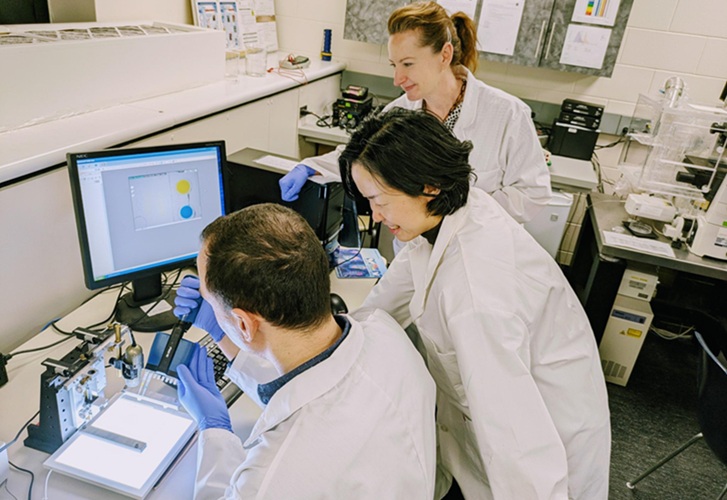
Low-Cost Portable Screening Test to Transform Kidney Disease Detection
Millions of individuals suffer from kidney disease, which often remains undiagnosed until it has reached a critical stage. This silent epidemic not only diminishes the quality of life for those affected... Read more
New Method Uses Pulsed Infrared Light to Find Cancer's 'Fingerprints' In Blood Plasma
Cancer diagnoses have traditionally relied on invasive or time-consuming procedures like tissue biopsies. Now, new research published in ACS Central Science introduces a method that utilizes pulsed infrared... Read moreHematology
view channel
New Scoring System Predicts Risk of Developing Cancer from Common Blood Disorder
Clonal cytopenia of undetermined significance (CCUS) is a blood disorder commonly found in older adults, characterized by mutations in blood cells and a low blood count, but without any obvious cause or... Read more
Non-Invasive Prenatal Test for Fetal RhD Status Demonstrates 100% Accuracy
In the United States, approximately 15% of pregnant individuals are RhD-negative. However, in about 40% of these cases, the fetus is also RhD-negative, making the administration of RhoGAM unnecessary.... Read moreImmunology
view channel
Stem Cell Test Predicts Treatment Outcome for Patients with Platinum-Resistant Ovarian Cancer
Epithelial ovarian cancer frequently responds to chemotherapy initially, but eventually, the tumor develops resistance to the therapy, leading to regrowth. This resistance is partially due to the activation... Read more
Machine Learning-Enabled Blood Test Predicts Immunotherapy Response in Lymphoma Patients
Chimeric antigen receptor (CAR) T-cell therapy has emerged as one of the most promising recent developments in the treatment of blood cancers. However, over half of non-Hodgkin lymphoma (NHL) patients... Read moreMicrobiology
view channel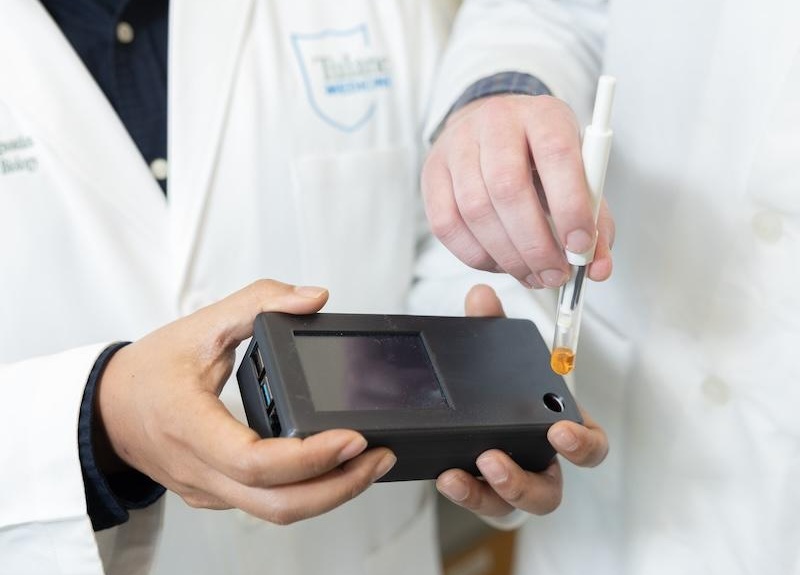
Handheld Device Delivers Low-Cost TB Results in Less Than One Hour
Tuberculosis (TB) remains the deadliest infectious disease globally, affecting an estimated 10 million people annually. In 2021, about 4.2 million TB cases went undiagnosed or unreported, mainly due to... Read more
New AI-Based Method Improves Diagnosis of Drug-Resistant Infections
Drug-resistant infections, particularly those caused by deadly bacteria like tuberculosis and staphylococcus, are rapidly emerging as a global health emergency. These infections are more difficult to treat,... Read more
Breakthrough Diagnostic Technology Identifies Bacterial Infections with Almost 100% Accuracy within Three Hours
Rapid and precise identification of pathogenic microbes in patient samples is essential for the effective treatment of acute infectious diseases, such as sepsis. The fluorescence in situ hybridization... Read morePathology
view channel
Sensitive and Specific DUB Enzyme Assay Kits Require Minimal Setup Without Substrate Preparation
Ubiquitination and deubiquitination are two important physiological processes in the ubiquitin-proteasome system, responsible for protein degradation in cells. Deubiquitinating (DUB) enzymes contain around... Read more
World’s First AI Model for Thyroid Cancer Diagnosis Achieves Over 90% Accuracy
Thyroid cancer is one of the most common cancers worldwide, and its precise management typically relies on two primary systems: (1) the 8th edition of the American Joint Committee on Cancer (AJCC) or ... Read more
Breakthrough Diagnostic Approach to Significantly Improve TB Detection
Tuberculosis (TB) remains the deadliest infectious disease globally, with 10.8 million new cases and 1.25 million deaths reported in 2023. Early detection through effective screening is crucial in identifying... Read more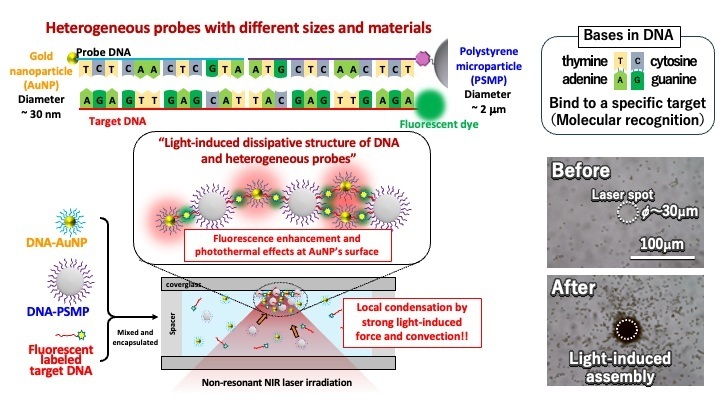
Rapid, Ultra-Sensitive, PCR-Free Detection Method Makes Genetic Analysis More Accessible
Genetic testing has been an important method for detecting infectious diseases, diagnosing early-stage cancer, ensuring food safety, and analyzing environmental DNA. For a long time, polymerase chain reaction... Read moreTechnology
view channel
Disposable Microchip Technology Could Selectively Detect HIV in Whole Blood Samples
As of the end of 2023, approximately 40 million people globally were living with HIV, and around 630,000 individuals died from AIDS-related illnesses that same year. Despite a substantial decline in deaths... Read more
Pain-On-A-Chip Microfluidic Device Determines Types of Chronic Pain from Blood Samples
Chronic pain is a widespread condition that remains difficult to manage, and existing clinical methods for its treatment rely largely on self-reporting, which can be subjective and especially problematic... Read more
Innovative, Label-Free Ratiometric Fluorosensor Enables More Sensitive Viral RNA Detection
Viruses present a major global health risk, as demonstrated by recent pandemics, making early detection and identification essential for preventing new outbreaks. While traditional detection methods are... Read moreIndustry
view channel
Cepheid and Oxford Nanopore Technologies Partner on Advancing Automated Sequencing-Based Solutions
Cepheid (Sunnyvale, CA, USA), a leading molecular diagnostics company, and Oxford Nanopore Technologies (Oxford, UK), the company behind a new generation of sequencing-based molecular analysis technologies,... Read more
Grifols and Tecan’s IBL Collaborate on Advanced Biomarker Panels
Grifols (Barcelona, Spain), one of the world’s leading producers of plasma-derived medicines and innovative diagnostic solutions, is expanding its offer in clinical diagnostics through a strategic partnership... Read more











